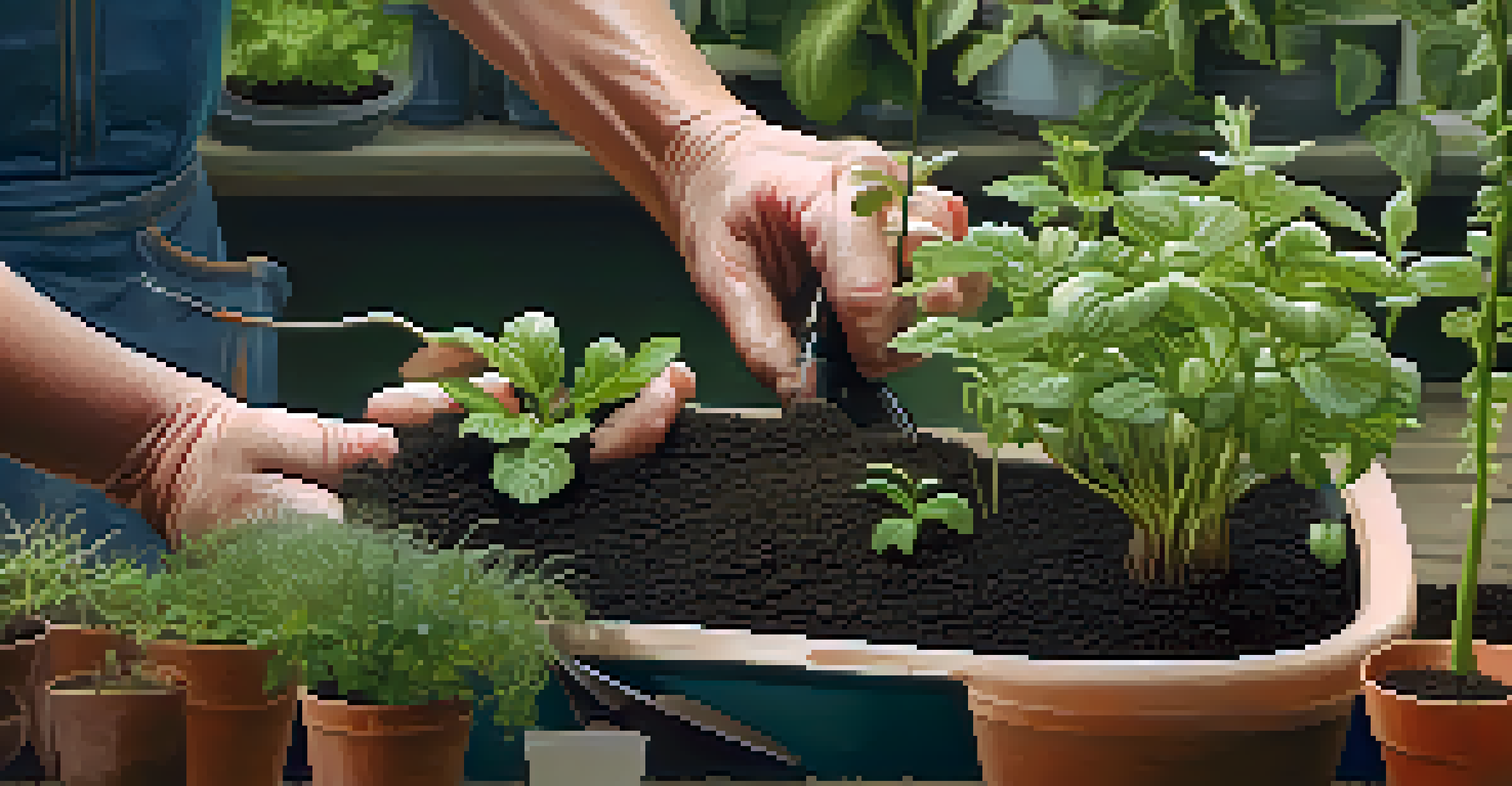Root Rot in Plants: Signs, Causes, and Natural Treatments

What is Root Rot and Why Should You Care?
Root rot is a plant disease caused by fungal pathogens that thrive in overly wet conditions. It affects the plant's roots, leading to decay and ultimately the decline of the plant's health. Understanding this condition is crucial for any gardener, as it can quickly spread and ruin your beloved plants.
Plants are like people; they need the right conditions to thrive.
When left untreated, root rot can lead to wilting, yellowing leaves, and stunted growth. It's like catching a cold; if you ignore it, it can lead to bigger health issues. Your plants rely on healthy roots to absorb water and nutrients, so recognizing root rot early is essential.
By learning about root rot, you can take proactive measures to protect your plants. This includes proper watering habits and recognizing the signs of trouble. With knowledge, you can save your plants and enjoy a thriving garden.
Signs of Root Rot: How to Spot Trouble Early
Identifying root rot early can make all the difference in saving your plants. Common signs include wilting leaves, yellowing foliage, and a general lack of vitality. If you notice these symptoms, it's time to investigate the roots and the conditions they live in.

Another key indicator is the smell; roots affected by rot often emit a foul odor due to decay. This is a clear signal that something is wrong below the soil surface. Additionally, if your plant's roots appear brown or mushy rather than firm and white, it's likely suffering from root rot.
Recognize Root Rot Early
Identifying signs like wilting leaves and foul odors can help you address root rot before it severely impacts your plants.
Regularly inspecting your plants allows you to catch these signs early. Think of it like a regular health check-up; the sooner you notice an issue, the easier it is to address it. Being vigilant can save your plants from a slow decline.
Common Causes of Root Rot in Plants
Root rot is often caused by overwatering, which creates a soggy environment that fungi love. Waterlogged soil deprives roots of oxygen, leading to decay. It's crucial to strike a balance in your watering routine to prevent this issue.
The greatest gift of the garden is the restoration of the five senses.
Poor drainage is another major culprit. If your pots don’t have adequate drainage holes, or if the soil is too compact, water can accumulate and lead to root rot. Always ensure that your plants are in well-draining soil to promote healthy root growth.
Lastly, certain environmental conditions, such as high humidity and low light, can contribute to the onset of root rot. Think of your plants as needing a balanced diet; too much moisture without the right conditions can lead to health problems. Being aware of these causes helps you create a more hospitable environment for your plants.
Natural Treatments for Root Rot: A Helpful Guide
If you discover root rot, don’t panic! There are natural treatments you can employ to save your plants. One effective method is to remove the affected roots and repot the plant in fresh, well-draining soil. This gives your plant a fresh start and helps it recover.
Another option is to use a natural fungicide, such as a solution made from baking soda and water. This can help combat the fungal pathogens causing the rot without harmful chemicals. It's like a gentle medicine for your plant to help it heal.
Prevent Root Rot with Care
Maintaining proper watering practices and using well-draining soil are essential steps to prevent root rot in your garden.
Additionally, adjusting your watering habits can prevent future issues. Allow the soil to dry out between waterings and ensure your pots have good drainage. By creating a healthy environment for your plants, you can significantly reduce the risk of root rot.
Preventing Root Rot: Best Practices for Plant Care
Prevention is the best medicine when it comes to root rot. One of the simplest ways to prevent this issue is to ensure proper watering practices. Water your plants only when the top inch of soil feels dry to the touch, allowing the roots to breathe.
Choosing the right soil is also crucial. A well-aerated potting mix that promotes drainage will help keep your plants healthy. Think of it as selecting the right bed for a good night's sleep; your plants need a comfortable environment to thrive.
Lastly, make sure your pots have drainage holes and consider using pots made from breathable materials like terracotta. These small adjustments can help prevent root rot and keep your plants flourishing for years to come.
When to Seek Professional Help for Root Rot
Sometimes, despite your best efforts, root rot can be severe, and you may need to seek professional help. If you've tried natural remedies and your plant shows no signs of improvement, it may be time to consult with a plant specialist. They can provide insights based on their expertise.
Additionally, if multiple plants in your care are showing signs of rot, it might indicate an underlying issue in your growing environment. A professional can assess your situation and help you identify the root causes as well as potential solutions.
Seek Help When Needed
If natural remedies fail and multiple plants are affected, consulting a plant specialist can provide valuable insights for recovery.
Remember, it's okay to ask for help! Just like we consult doctors when we’re unwell, seeking advice from a plant expert can be the key to saving your green friends. Investing in your plants' health is always worth it.
Conclusion: Thrive Beyond Root Rot with Knowledge
Understanding root rot equips you with the tools to protect your plants. By recognizing the signs, knowing the causes, and employing natural treatments, you can minimize the risk of root rot in your garden. It's all about being proactive and attentive.
With proper care and preventive measures, your plants can thrive, turning your garden into a lush paradise. Remember, every gardener faces challenges, but overcoming them is part of the joy of nurturing living things.

Embrace the journey of plant care with confidence, knowing that even if root rot strikes, you have the knowledge to fight back. Happy gardening!